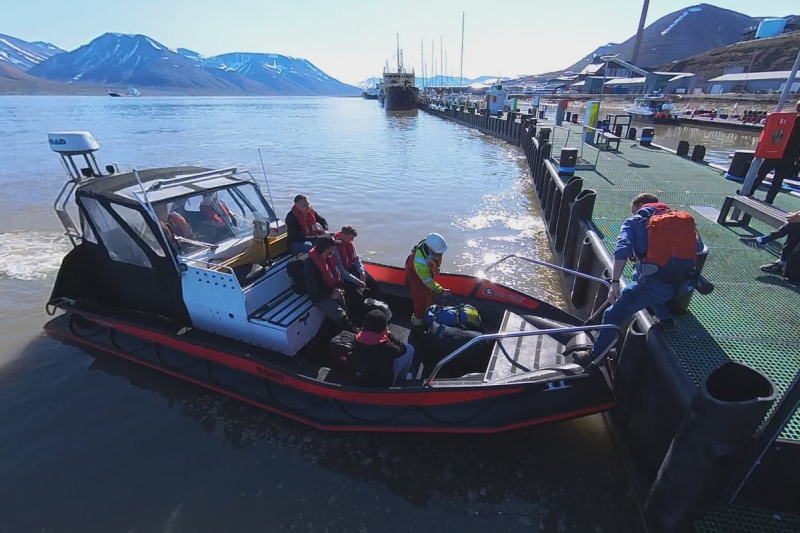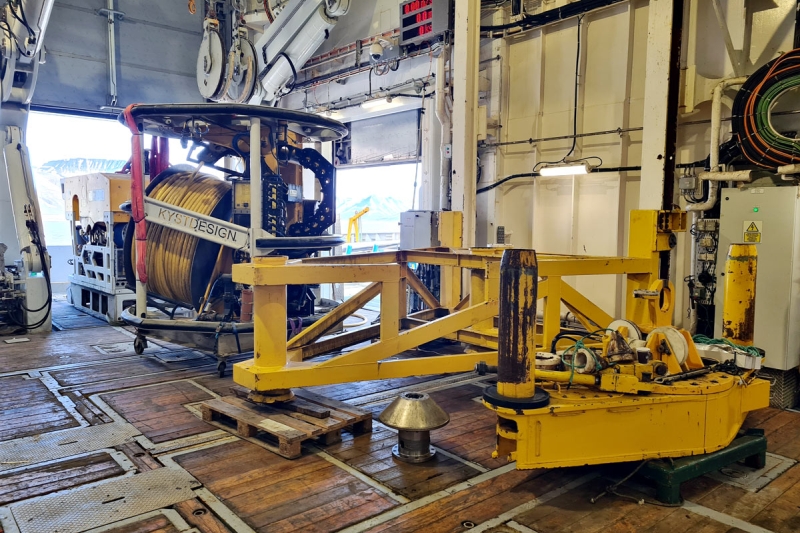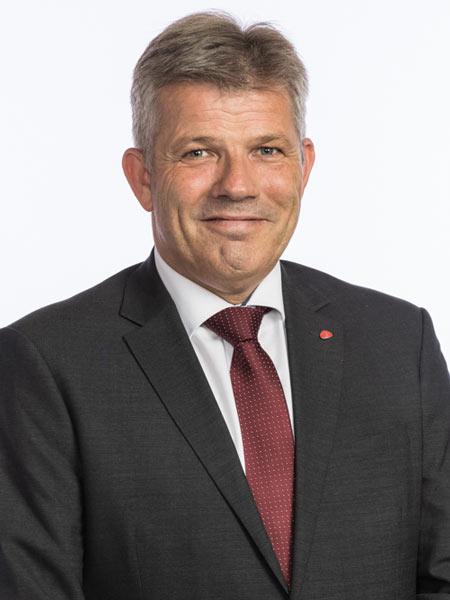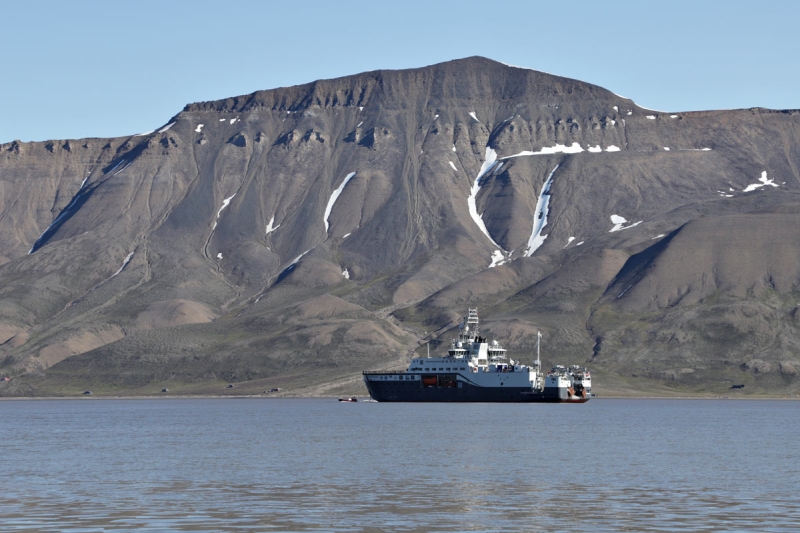GoNorth's objective is to push the boundaries of knowledge about the Arctic Ocean, from the sea floor and subsea geology to the sea ice, via the water column. This summer, the mid-ocean ridge between Svalbard and the North Pole, the Gakkel Ridge, will be investigated. This is an underwater mountain range that stretches approx. 1,800 kilometers, in a roughly straight line, from the northern end of the Fram Strait, and towards Siberia.
The first expedition in GoNorth was carried out in 2022, and now in July 2023 it is time for the second expedition. The research vessel FF Kronprins Haakon leaves from Longyearbyen 6 July, and returns to the same place 7 August.
You may follow the expedition and the work onboard in daily reports (in Norwegian)
Knowledge about the Arctic Ocean
To geologists and geophysicists, the Gakkel Ridge is known as an ultra-slow spreading mid-ocean ridge. In essence, tectonic plates on either side are moving away from each other, but very slowly compared to other mid-ocean ridges. Because it is covered with ice, we know very little about it. That alone is enough to make it interesting.
Professor Jan Inge Faleide, from Department of Geosciences at the University of Oslo, has been involved in GoNorth since the very beginning:
– GoNorth will build on the limited knowledge acquired about the Gakkel Ridge 20 years ago, when a two-ship expedition conducted a detailed bathymetric survey (essentially mapping the water depth and sea floor) and took samples by dredging the ocean bottom, says Faleide.
Extensive investigations with two research ships
Scientists have reasons to get excited about the anticipated results of this expedition: with RV Kronprins Haakon's support, a German research vessel, the icebreaker Polarstern will conduct a seismic survey of the ridge, which will provide information about its composition all the way down to the mantle.

A seismic refraction survey such as the one that will be carried out on the Gakkel Ridge uses sound waves which bounce back and get registered by ocean bottom seismometers placed on the ocean floor. The reason two ships are needed is that seismic surveys are typically carried out in a straight line and at a constant speed, which is easier said than done when the entire area is covered in ice.
As in the first GoNorth expedition, the University of Bergen's remotely operated submersible Ægir 6000 will be a part of the survey.

This time, it will explore the Gakkel Ridge with its sensors and cameras, looking for hydrothermal vents, among other things, and collecting samples.
– What's great about the samples collected by a ROV such as Ægir 6000 is that you know exactly where they're from, says professor Faleide.
With dredging samples, you know that they come from a specific line, but you don't know exactly where every piece of material is from. With an ROV, you get exact coordinates.
Samples from the hydrothermal vents themselves can also shed light on the structures' history. Very small quantities of water trapped inside crystals in the rocks that shape these vents contain information about past temperatures and pressure conditions. Scientists from UiB and UiT will be on the lookout for such vents during the trip.
Norway's new shelf in the Arctic Ocean
In 2009, the UN's Commission on the Limits of the Continental Shelf granted Norway's territorial claims on its northernmost shelf. Norway's claim was based largely on the area's geology, and on observations carried out by a group of scientists including professor Faleide.
With this increase of Norway's territorial waters comes an increase in the country's management responsibilities of the water column.
The Gakkel Ridge itself falls outside of Norway's extended territorial waters, but learning about it will tell us more about the origins of this new Norwegian shelf, says professor Faleide.
A priority for the Norwegian government
For the Norwegian government, the Northern areas are the country's most important strategic focus area. The Minister of Fisheries and Ocean Policy Bjørnar Skjæran explains why:

– GoNorth is both important and exciting, and that is why the government has prioritised this project since 2021. Norway is a leading maritime and polar nation – both in the north and in the south. Our research, presence and activity in the High North is about safeguarding Norway's interests.
Climate change also demands that we strengthen our knowledge in several scientific fields. The list is long, and GoNorth contributes to our understanding of the sea, geophysics, biology, oceanography, and more. It is evident to me that strengthening the knowledge of our "neighbourhood" is a fundamental national interest. There are still knowledge gaps, and we plan to close these, in part through the research that is underway through GoNorth. This is also an important element of our policy for the northern region", says Bjørnar Skjæran.
The government wishes to increase our knowledge in cooperation with other countries.
– GoNorth, through its research, makes important contributions to the work being done internationally on sea, climate and the environment, says Bjørnar Skjæran. It's very positive that several countries are participating in this initiative. These are good partners with whom we have positive experiences of working together, like our Nordic neighbours, Germany and the USA. Cooperation with these countries is crucial to our success.
After the current GoNorth expedition is over, work will continue towards planning a third one in 2024.

This article is a slightly modified version of an article about the GoNorth expedition and the exploration of the Arctic Ocean made available to the media and expedition partners from GoNorth's communication group/advisor Daniel Albert/SINTEF/GoNorth.
About GoNorth
GoNorth – Exploring the Arctic Ocean is Norway's largest investment in the exploration of the Arctic Ocean, and has been under planning for 12 years. A total of 13 universities and research institutes participate. including the Department of Geosciences, University of Oslo.
Three research cruise are included in the expedition, which is carried out with the research vessel FF Kronprins Haakon. The first research cruise was carried out in 2022, then a voyage will now be carried out in the summer of 2023, and the last voyage is in 2024.
Geology and geophysics are focus areas of the 2023 expedition, but the sea ice, the water column and the biology of the sea floor sediments will also feature among this expedition's targets.
